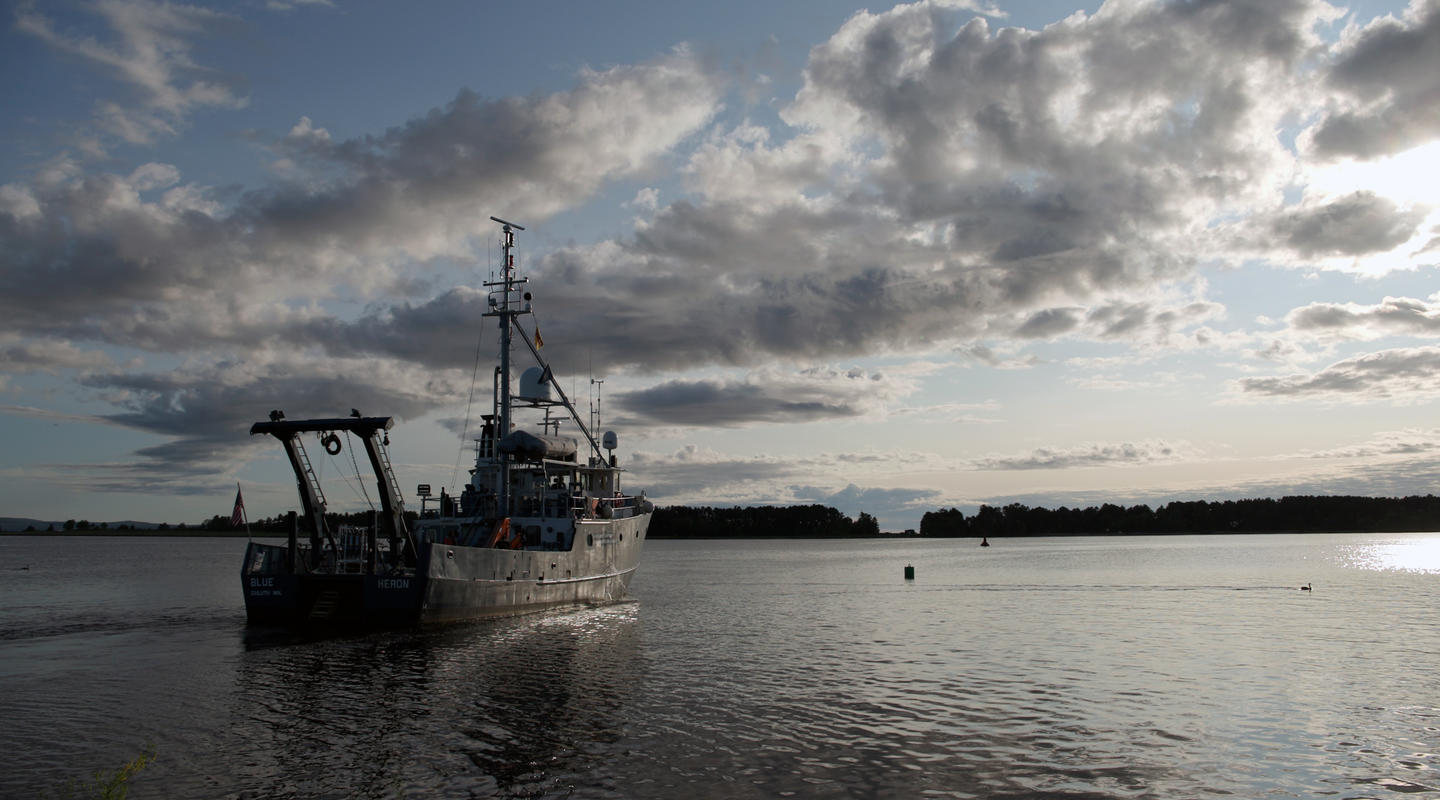Curious fishers at a den box. Courtesy: NRRI
Understanding the needs and challenges facing wildlife means researchers spend a lot of time in Minnesota’s forests. For Michael Joyce and his crew, that means trekking many miles in all seasons. But those miles provide real-time insights into the impact of forest- and land-management decisions.
As a wildlife biologist at the Natural Resources Research Institute (NRRI) at the University of Minnesota Duluth, Joyce’s research focuses on forest mammals, especially those in the weasel family—fishers and martens. One focus of ongoing research is trying to understand why the fisher population in Minnesota has dropped by about half, from a high of 16,000 in the year 2000.
Fishers can be used as an indicator for mature and old-growth forest conditions, and there is concern that population decreases are a sign that forest management isn't leaving enough of what they need. They are also valued by trappers for their fur and observers because of their natural charisma.
“So their decline may be an important indicator of changes in our forest, but also potential loss of recreational opportunities or of critical native components of our forests,” Joyce says.
First, he thought the lack of natural tree cavities—old, large trees that rot inside—didn’t give mama fishers enough places to den and raise kits. Joyce and his research team deployed 100 specially crafted artificial den boxes, mounted them high on trees throughout northern Minnesota forests, and set trail cameras to watch for activity.
Activity they got. Plenty of forest animals enjoy a safe hiding place and many more were just curious or thought the boxes were a handy scratching post. But use by fishers was low.
“Although fishers used the boxes for resting, mating, and storing food, we didn't have any give birth to their kits in our boxes," he says. “So we had to consider other things impacting their decline.”
Predator problem?
Over the past two winters, Joyce and his team live-trapped and collared six bobcats—the fisher’s primary predator. Research by the Minnesota Department of Natural Resources has shown that this wild feline population has increased to about 7,000 from a low of 2,000 some 40 years ago. They also deployed 10 collars on fishers.
“Bobcats tend to do well in young forests, while fishers prefer old forests, but there are forest conditions that they both use, especially where they are hunting for shared prey,” Joyce explains. “By tracking their movements, we can better understand what they both need from the landscape and where and when fishers are at risk of being killed by bobcats.”
Ultimately, this information will help NRRI wildlife biologists learn more about why bobcats are preying on fishers and what can be done to support fishers.
Moving south?
While his studies in northern Minnesota were underway, fisher sightings in the Twin Cities metro and further south started increasing. Evidence has largely come from public sightings of fishers seen or captured on trail cameras, but Dakota County has also documented fishers through targeted surveys. The Minnesota Department of Natural Resources has been compiling sightings since 2005, but no formal study has taken place until now.
Given that fishers have long been considered a wilderness species, research is now underway to understand this shift. Knowing how they are doing in the metro and southern parts of the state could give clues to why they aren't doing well in the north.
“It’s an interesting twist to study how these mammals are using a more fragmented landscape with higher human density,” Joyce says. “We’re excited to learn more about how fishers are doing in southern Minnesota, but also hoping this new study gives us clues about why their populations dropped up north."
Joyce’s team radio-collared four southern female fishers and one male to track their movement and understand how their habitat, food sources, and reproduction and survival rates differ from those of fishers in the northern forests.
The baseline ecological data collected will help inform forest management practices that balance the needs of wildlife, society, and forest resource availability.
“Our forests must meet a lot of needs and provide a lot of different functions,” Joyce says. “Our wildlife work adds knowledge to one aspect with a ripple of impact.”
To contribute to NRRI’s mission, visit the NRRI Fund.


